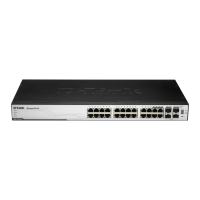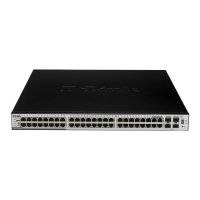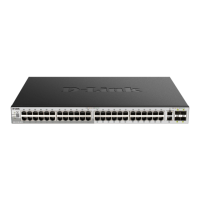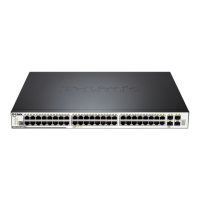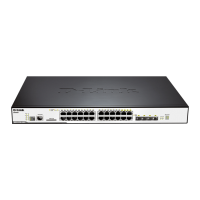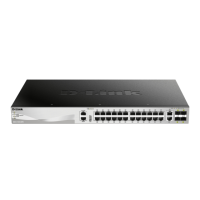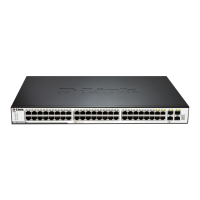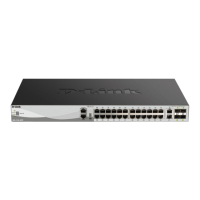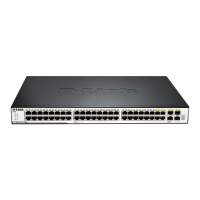DGS-3100 Series Gigabit Stackable Managed Switch User Manual
Configuring Storm Control
Storm control limits the amount of Multicast, Broadcast and Unknown Unicast frames accepted and forwarded by the
device. When Layer 2 frames are forwarded, Broadcast, Multicast and Unknown Unicast frames are flooded to all ports on
the relevant VLAN. This occupies bandwidth, and loads all nodes on all ports.
A Broadcast Storm is a result of an excessive amount of broadcast messages simultaneously transmitted across a network by
a single port. Forwarded message responses are heaped onto the network, straining network resources or causing the
network to time out.
1. Click Qos > Traffic Control. The Traffic Control Settings Page opens:
Figure 4-3 Traffic Control Settings Page
The Traffic Control Settings Page contains the following fields:
Field Description
Traffic Trap Settings
Defines whether to send out a trap when a Traffic Storm occurs. The possible field values are:
None — Do not send out traps when a Traffic Storm occurs.
Storm Occurred — Send out traps (SNMP and Syslog) when a Traffic Storm occurs. These
traps are sent only on ports on which the action is Shutdown.
Unit
Defines the stacking member for which the storm control parameters are displayed.
From Port
Defines from which port storm control is configureed.
To Port
Defines to which port storm control is configured.
Storm Control Type
Specifies the Broadcast mode currently enabled on the device. The possible field values are:
Broadcast Storm
Broadcast and Multicast Storm
Broadcast, Multicast and Unknown Unicast Storm
Action
Indicates which storm action to perform if a Broadcast Storm occurs. The possible field values
are:
131
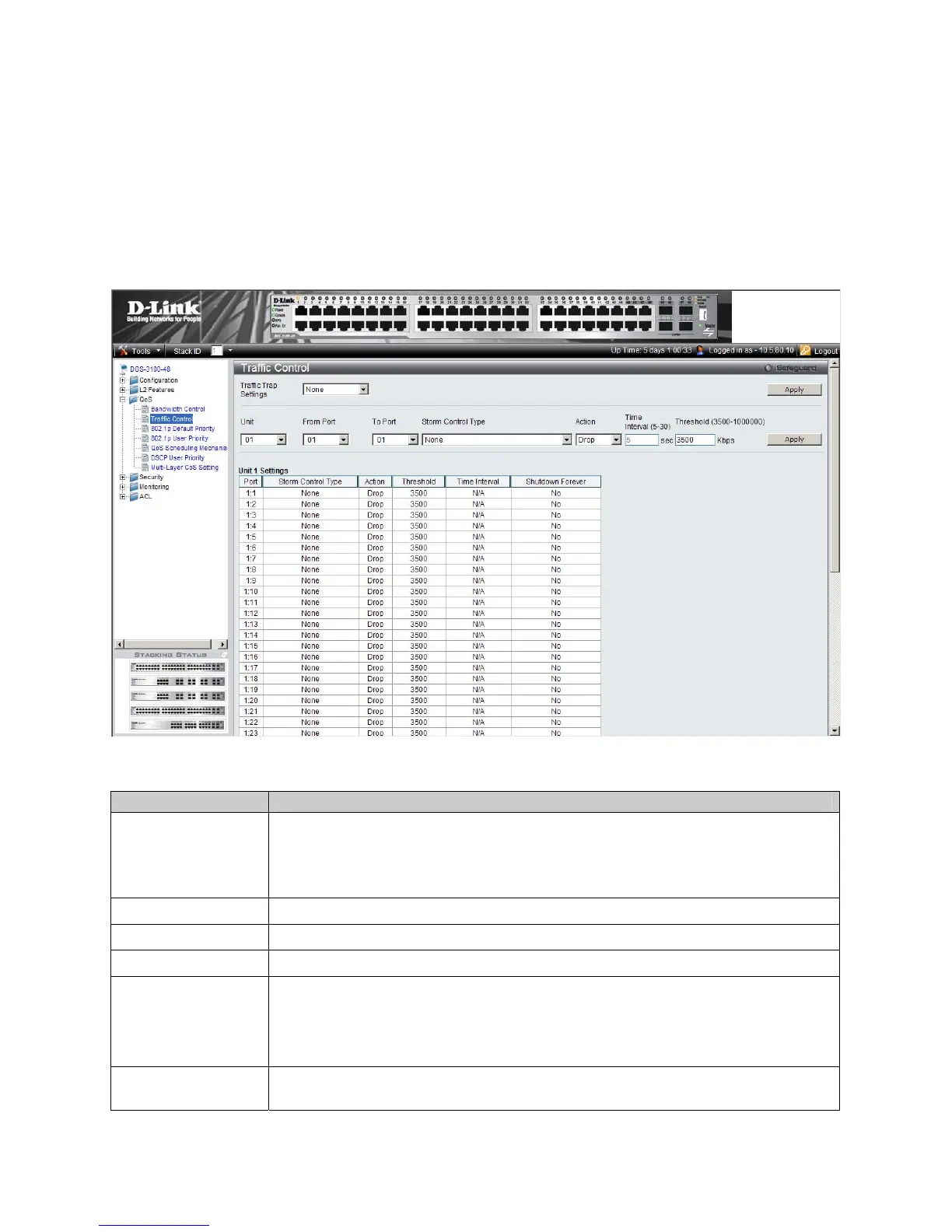